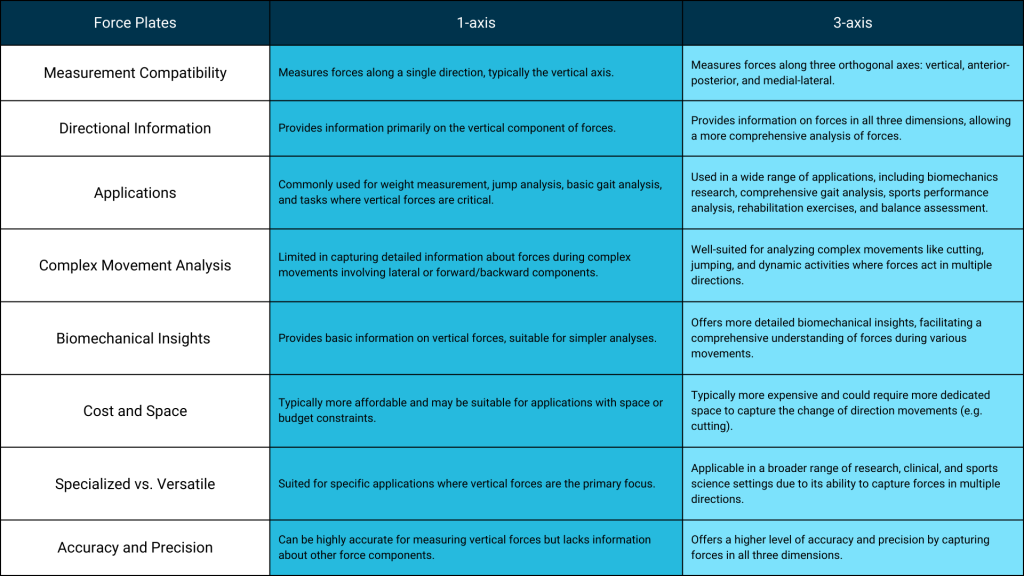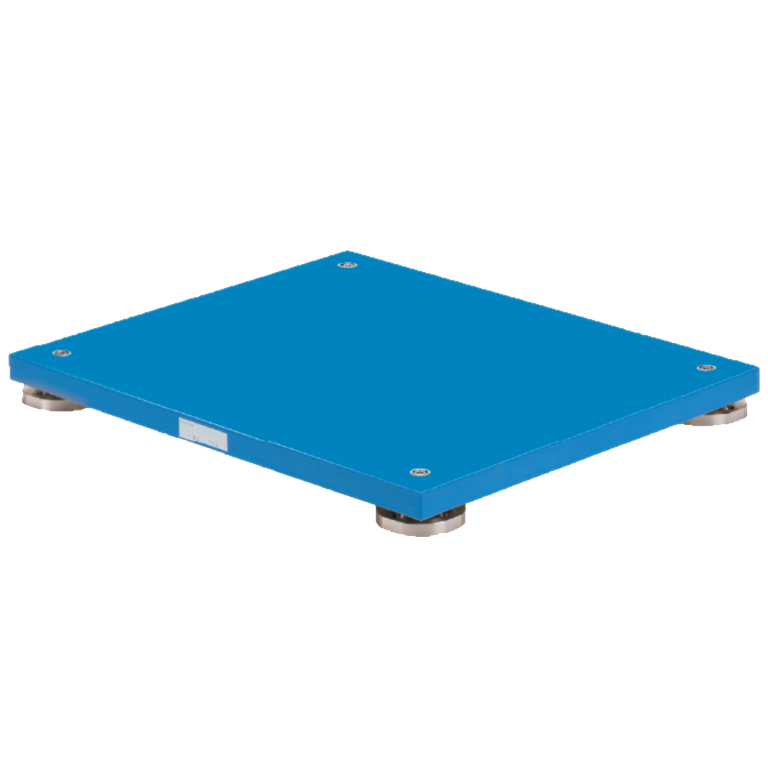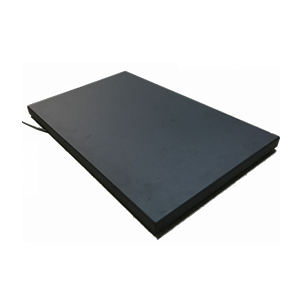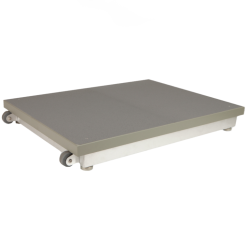Force plates have various uses across expanded disciplines. Some of the most common use cases for force plates are in biomechanics research, performance analysis, physical therapy, balance assessments, gait analysis, orthopedics, sports injury prevention, and ergonomics.
Force plates measure Ground Reaction Forces (GRF) during activities such as walking, running, jumping, lifting, or other forms of physical activity. They do this by applying the principles of Newton’s third law of motion, which states that there is an equal reaction for every action. Force plates are designed to detect and quantify these reactions through strain gauge technology and load cells.
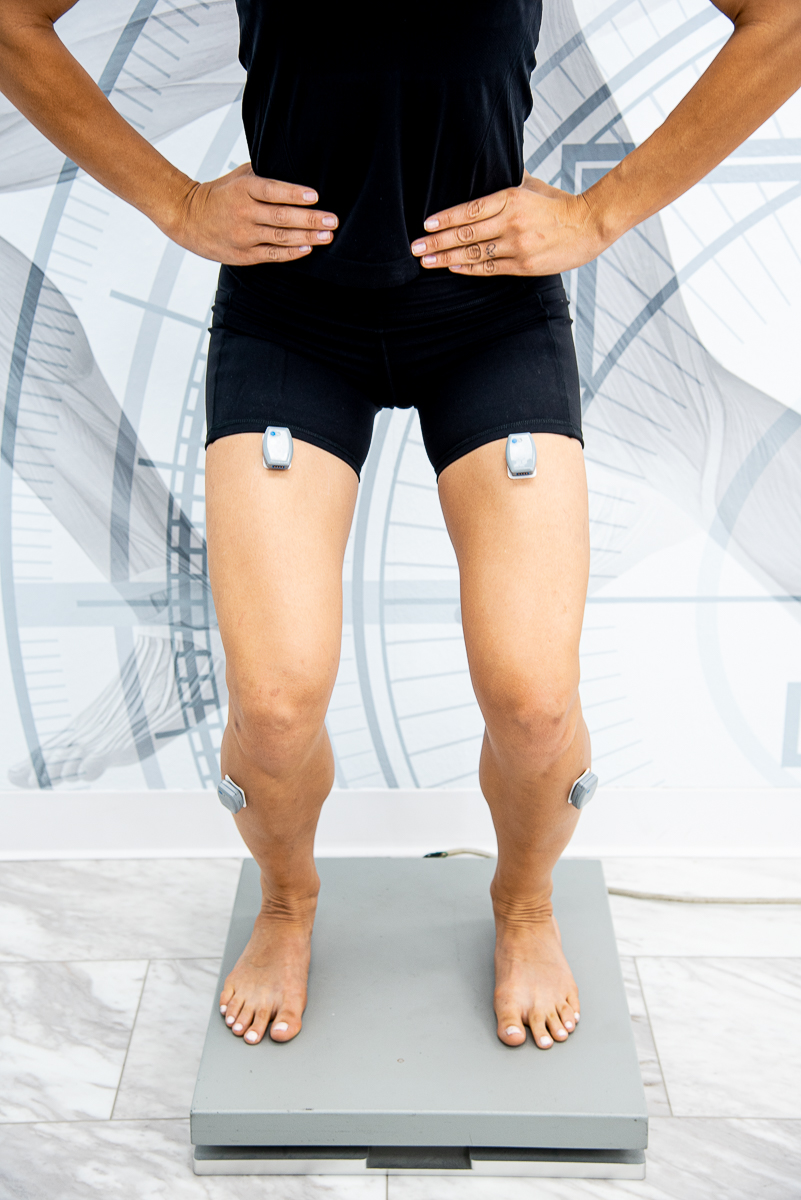
All force plates are not created equal, and there can be many types depending on the type of measurement technology used as well as how many axes are measured.
1-axis (1D) force plates measure forces along a single direction, usually the vertical axis. This type of force plate supports applications that focus on the vertical component of force such as weight and impact forces.
3-axis (3D) force plates measure forces along the vertical, anterior-posterior, and medial-lateral axes This type of force plate allows for the most comprehensive and robust analysis of GRF and provides the most detailed information on forces applied in all directions.
Depending on the requirements of the study or the application, both types of force plates offer their respective benefits. 3-axis force plates are more versatile when it comes to applications in biomechanics research and clinical applications where it is desirable to understand the horizontal force involvement, but 1-axis force plates may be more suitable when cost or space constraints are involved, as well as when the application is limited to vertical force analysis only (e.g. for jump analysis).

